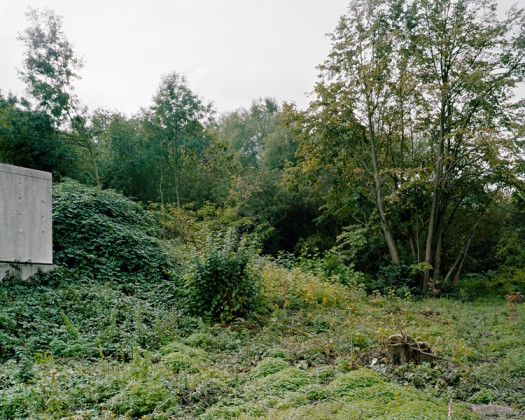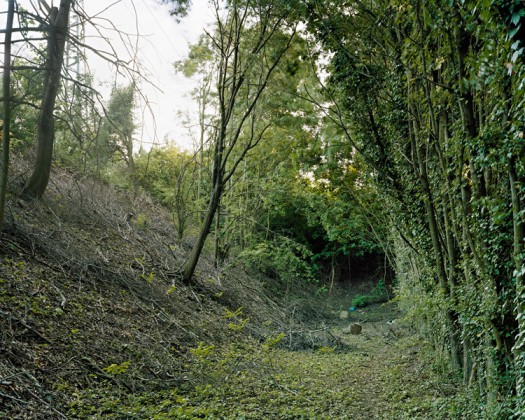

[Photographs from Christoph Engel’s series “Exterieur”, which explores the sort of cryptoforested terrain vague which the urban field manual might excel in operating in.]
Issue 14 of the Magazine On New Urbanisms, “Editing Urbanism”, is out. Brian Davis, Brett Milligan, and I co-wrote a piece in that issue, “Urban Field Manuals”, which argues that the humble maintenance manual — a document which is, in an architectural context, typically slapped together at the end of a project in an inevitably futile attempt to arrest the effects of material degradation on the completed architectural object as long as possible — might be hybridized with the similarly prosaic field guide to produce a new kind of architectural document (the field manual), describing procedures and possibilities rather than prescribing forms:
In considering novel urbanisms, it is important not only to investigate new urban processes and kinds of organization, but also to re-evaluate the methodologies by which we intervene in urban systems and spaces. The traditional tools of the urbanist are the capital project and the contract document; the capital project originates with a major initial capital investment by a party other than the designer (usually either a public agency or a private investor), while contract documents are used to define the terms of production and maintenance of a capital project. Neither of these tools are obsolete in a condition of “editing urbanism”. However, we propose that another, often-ignored tool may be of greater use: the maintenance manual.
Today’s urban maintenance manual is typically a dull and even banal document; whether it is produced by an architectural team for a built project or a planning department for a zoning code, it is typically explicitly aimed at preserving the status quo within the urban environment.
Its form, however, offers the opportunity for new kinds of urban engagement. Rather than prescribing set geometries for an urban territory or drawing up master plans for the delineation of new neighborhoods — as is done in traditional urban practice — the maintenance manual can be used to describe procedures and reactions to be performed in response to shifting urban conditions. In this sense, the maintenance manual offers urban editors a dual opportunity to increase focus on adaptable, opportunistic strategies, and to expand agency in shaping the city from the typically limited set of actors (such as professional designers, developers, and local politicians) to anyone who can read, interpret, and apply the instructions found within a manual. It provides a format for instructions to edit the city, block-by-block, landscape-by-landscape.
The full piece — which illustrates the potential of this approach by developing the outline of such a kind of document through cataloging a succession of contemporary urban projects, ranging from Santiago Cirugeda’s Recetas Urbanas to the work of Grassroots Mapping to the recent output of the New York City government, aligning them with a series of working modes we call “the bureaucratic retrofit”, “the subversive”, “the diagnostic”, “the jerry-rig”, “the readymade”, and “the mycorrhizal” — can be found in MONU 14, which is available here.
[Brett has a post up at Free Association Design which, among other things, goes into further detail on those working modes.]


[…] urban field manuals – mammoth // building nothing out of something urban field manuals http://t.co/zEk6tmP (tags: via:packrati.us) […]
[…] a more open arrangement defined by the manual. As Brett Milligan of F.A.D. and Rob Holmes of Mammoth recently noted, we had a chance to work this idea out a bit in the most recent issue of MonU. […]
[…] our recent thinking about the role of maintenance in urban design, I was quite interested when I noticed, in a […]
[…] Guerilla and DIY Practice and Urbanism". (This niche is not unrelated to the nascent genre of the urban field manual.) In BLDGBLOG post entitled "Urban Hypotheticals", Geoff Manaugh both describes the Hypothetical […]